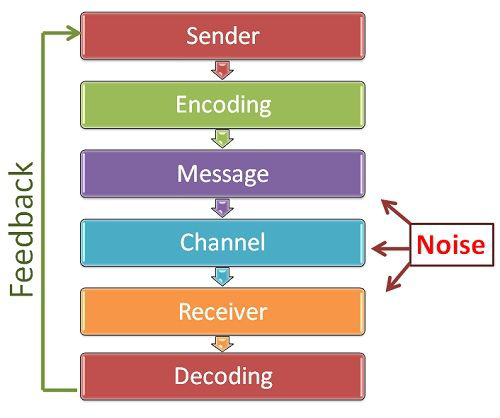1.4 Process of Communication
Introduction :- .
Communication is when one person shares a message with another person through talking, writing, or using gestures, so they understand each other.
Communication involves several steps:
1. Sender has a message to share.
2. Sender encodes the message into words, gestures, or symbols.
3. Sender transmits the message through a chosen channel (e.g., speaking, writing, texting).
4. Receiver receives the message.
5. Receiver decodes and interprets the message.
6. Receiver may provide feedback or a response to the sender.
Effective communication requires clarity and understanding at each step.
Process of Communication in more detail:-
1. **Sender:** The process begins with a sender who has a message or information they want to convey to someone else.
2. **Encoding:** The sender encodes or translates their message into a form that can be communicated. This can involve choosing words, body language, writing, or any other means to express the message.
3. **Message:** The encoded message is what the sender intends to communicate. It can be verbal, written, non-verbal (such as gestures or facial expressions), or even a combination of these.
4. **Channel:** The sender selects a communication channel or medium through which to transmit the message. This could be face-to-face conversation, phone call, email, text message, or any other suitable method.
5. **Transmission:** The sender transmits the message through the chosen channel. For example, if it's a spoken message, they speak the words; if it's written, they send the written document.
6. **Receiver:** On the other end, there is a receiver who receives the transmitted message.
7. **Decoding:** The receiver decodes or interprets the message to understand its meaning. This involves making sense of the words, tone, context, and any non-verbal cues.
8. **Understanding:** The receiver works to understand the message as intended by the sender, taking into account their own knowledge and context.
9. **Feedback:** In some cases, the receiver may provide feedback to the sender, acknowledging receipt of the message or seeking clarification if needed.
10. **Response:** The receiver may respond to the message in some way, whether it's answering a question, engaging in a conversation, or taking action based on the information received.
Conclusion :-
Effective communication relies on clear encoding, transmission, decoding, and understanding of the message by both the sender and receiver. Misunderstandings can occur at any stage, so it's important for both parties to actively engage in the process to ensure effective communication.




No comments:
Post a Comment